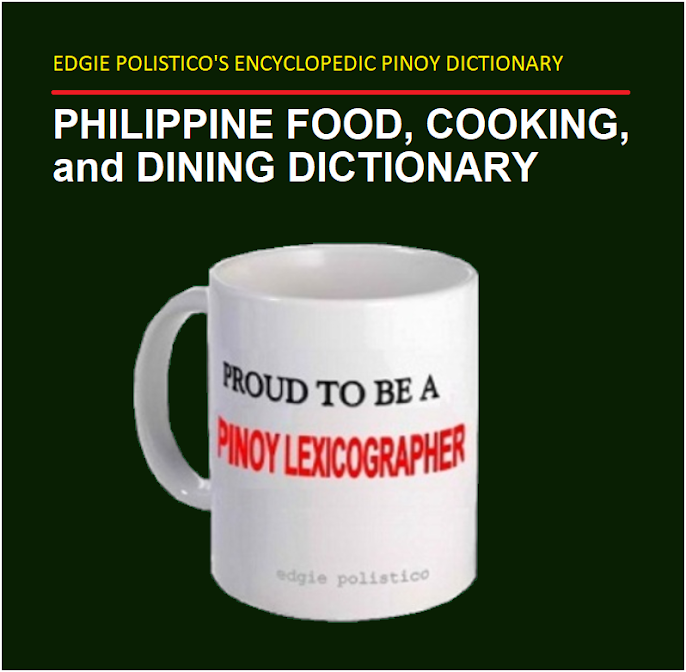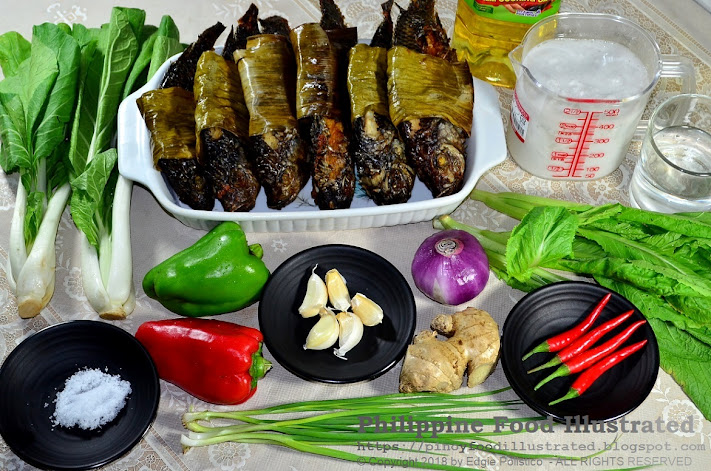
My pancit odong collection.
odong - /o-dóng/ Cebuano, Boholano, Waray, Surigaonon, and Davaoeño noodle [n.] Visayan stick noodle.
Sticks of uncooked odong noodles are dry and stiff like raw spaghetti noodle but would break easily when bent.
This Visayan spaghetti-like stick noodle is one of the old-time favorites in the Visayas and Mindanao. It is basically made with wheat flour, salt, water, and food coloring. Some are flavored with seasonings or with chicken eggs.


It is often cooked into a saucy dish with flaked meat of canned sardines, preferably tomato paste flavored.

My pancit odong collection. Some are from Tagum, Davao del Norte; Davao City, and some from Barra, Opol, Misamis Oriental.

Odong is commonly sold in small pack of a dozen (12) sticks, or a little more. Two packs are quite enough to serve one person. When boiled, the sticks will expand and thicken the remaining soup into a delectable sauce.
The usual seasoning spices used are ahos (garlic), sibuyas bombay (red or purple onion), and luy-a (ginger). They are sliced into pieces, and sliced garlic and ginger are pounded lightly and then sautéed at the start of cooking.
Cups of water are added to make the soup and boiled with the tomato red sauce of canned sardines. Canned sardines are casually called by Visayans tinapa or nilatang sardinas. Do not confuse Visayan tinapa with the Tagalog tinapa, which is smoked fish. Smoked fish in the Visayas is called tinap-an or tinap-anan. Though smoked fish can also be a good substitute for canned sardines in pancit odong
Adding one or a combination of leafy vegetables is optional. The most common leafy vegetable used are repolyo (cabbage), kalamunggay (moringa leaves), and alugbati (Malabar nightshade). You can also use any other leafy vegetables available in the garden or the market. Other vegetables like kalabasa (squash), sayote (mirliton), or batong (string beans) can also be added to pancit odong.
Added last are flaked meat of sardines, pounded or freshly ground black pepper and salt to suit the taste.

Sinardinasan pancit odong with freshly plucked ashitaba leaves and red chilies. Just take note here that after I took this photo, we covered the dish for a while to let the remaining heat of the freshly cooked pancit odong cook the leaves before we dine it.
Some would also add beaten chicken egg towards the end of cooking.
Chopped sibuyas dahon (spring onion) and bits of browned roasted garlic can be used to garnish a serving of pancit odong, or use your creativity on how to garnish one using other ingredients like this pancit odong we have for lunch with ashitaba leaves and sili (spicy hot red chili).
Chopped sibuyas dahon (spring onion) and bits of browned roasted garlic can be used to garnish a serving of pancit odong, or use your creativity on how to garnish one using other ingredients like this pancit odong we have for lunch with ashitaba leaves and sili (spicy hot red chili).

Pancit odong. In Visayas, sinardinasan means "with sardines."
All photos by Edgie Polistico posted in this blog are copyrighted. ALL RIGHTS RESERVED.
If you liked this post, share it.
Let us know your opinion on the subject. Feel free to comment in the comment section, below. It is important for us to know what you think.
Tell us what other topics you would like us to write, share, and discuss.
Continue to follow my blogs. You can also follow and learn more by joining us in our Facebook group. Have more bits and pieces about our kind of food, ingredients, and ways of cooking, dining, and knowing food culture across the 7,641 islands of the Philippines. I will search for more and continue to share my findings. It is my pleasure to rediscover the known and least known things or the unheard ones and put them here for everyone to find, learn, and treasure.
Encouragement and enthusiasm are not enough. I also need moral support, prayers, and anything else that can uplift my spirit and keep my good reasons. Keep them coming. All I know is that I am happy with what I am sharing and giving away. If you are pleased and happy with what I am doing, just smile and please share the happiness. Keep sharing and include to share the PHILIPPINE FOOD ILLUSTRATED. I feel energized when my blog becomes one of the reasons why you are happy and smiling.
Edgie Polistico
For more about Filipino food, see this Philippine Food, Cooking, and Dining Dictionary. It is OPEN and FREE.


























